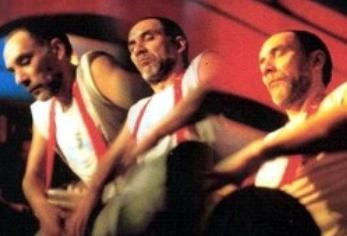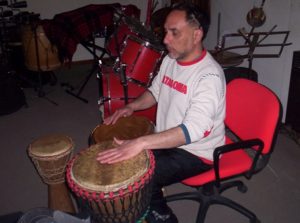By Alberto Murrillo, teacher of music, percussionist.
I will use a “crude” metaphor to describe the general framework.
On the one hand, we need to consider the great intellectual and above all, political power of Europe to perpetuate in the history of official Western musical education (with an almost exclusively preponderance in the American continent), scholars and researchers of the stature of Dalcroze, Orff, Willems, Martenot, Ward, Kodaly and the like who, to greater or lesser extents, included the study, the awareness, the mastery of rhythm (or however you want to call it) as a central question to be addressed in the musical education of anyone who wants to be an instrumentalist or teacher of the art of music.
On the other, continuing with the “crude” metaphor, the great visceral power, testimony of Eastern, indigenous, ethnic and especially African cultures, embedded in many cases, in pain and subjugation, runs through the history of the world from time immemorial and has fused with many other cultures, merging its aesthetic, rhythms and schools of music.
Experience and the intellect, course and discourse, the informal and the formal (to use terms that situate us in this present), have supplied vital tensions since the world began.
Two schools? I don’t have the answer. But wait, let’s assume there were actually two schools that, up to a point in time not so far away, have been on opposite sides. Or rather, that the formal, academic “school” has since then considered the other “school” (that empirical, fun-loving and unstructured, but ultimately poor and misguided school) its enemy, and has declared it mortally sinful and of little value.
It is worth mentioning at this point, that there is no mention here of the vice versa of this conflict, because there is no official information about it.
For me, this tension to which I refer, has come about and been fed, despite the Dalcrozes, the Kodalys, Orffs and all of those restless and sensitive beings who have tried to enrich the learning of music. For me this tension is a matter of systems, of people who have nothing to do with the essence of music, and who would rather have isolationist ideological systems, and “conservationist” policies, perhaps with pedagogical teaching models that can’t properly interpret people’s natural expressive needs.
It is already known that for several years both schools have maintained a relationship. They intertwine, complementing each other, so today with the 21st century in full flow, the concept “conservatory”, the “academic” structure, “formal” teaching, have their back doors unlocked, and through them and the windows too, come the sounds of strings, groups, partying, bagualeras, murgas and punk-rock, pop chamamés, virtual sonatinas, Afro chacareras and all the digitangos that one can imagine.
They enter and leave their tracks on the waxed floors, they sit with their feet on the glass tables, and they open the fridge and help themselves to a few things. But they never have broken anything. On the contrary, all the patios are again full of birds, and there is light and laughter until late.
Sir George Martin (the Beatles producer) says that rhythm is the difference between life and death.
Or haven’t we ever listened to groups and/or soloists performing vocal or instrumental music, executing works in a technically impeccable manner, with perfect intonation but failing to attract us, the audience, who can’t stop thinking of other things or, unconsciously, encourage our sight to run around the room`s decorations, or that our concentration becomes irredeemably depressed?
Rhythm! Rhythm’s missing there! Rhythm is the Eros of music. It`s vital energy, that primal pulse that makes our bellies quiverm what we get from feeling and not from knowing.
That is why there is percussion in the choir, because everything has rhythm, and this is particularly obvious if choral groups, their arrangers and authors, introduce into the repertoire musical expressions from ethnic, urban and rural folk roots. And above all, these expressions are not things of the past which had been forgotten, but things which are now in the ear of the people.
Finally, I think in any interpretation of a musical work (especially if it is popular) the rhythm must be mastered and transmitted to perfection, using percussive instruments or objects or through the exact marking of the rhythms implicit in the melodies or harmonies.
In both cases the performers must feel, they must transmit to the listener the rhythm of the singing in the way a ballerina does in the dancing. Music without rhythm is like a photograph slightly out of focus.
George Martin is right. That’s why it would be very fruitful for composers and arrangers to include, or continue to emphasize rhythm in both complex works and simple accompaniments.
I am only thinking about rhythmic organizations with complex instrumental textures (because it would require specialists) but also would like to put a value on the vast field of resources that body percussion offers – hands, thighs, feet, percussive voice, clapping or foot-stamping in unison, or ensembles of such rich and subtle sound that it gives us the body, the principal instrument.
E-mail: tambormurillo@yahoo.com.ar
www.youtube.com/carlosalbertomurillo
Translated from the Spanish by Martin Clarke


